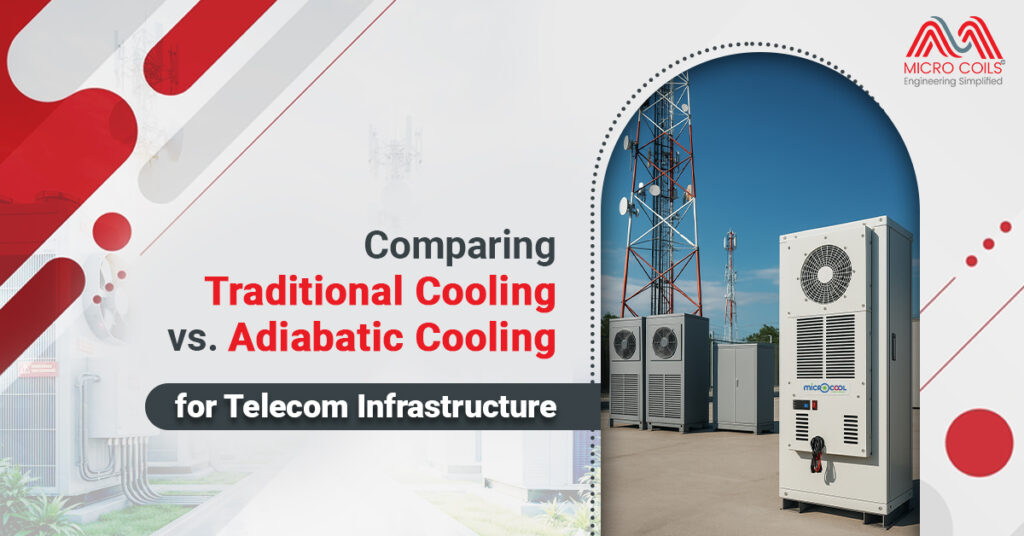
As a telecommunications infrastructure manager, you understand that cooling represents one of your largest operational expenditures and most critical reliability factors. With network densification increasing heat loads and sustainability mandates driving operational decisions, selecting the optimal cooling strategy has become a strategic imperative that directly impacts your bottom line and service reliability.
The cooling systems protecting your network infrastructure can determine whether you meet aggressive efficiency targets, stay within budget constraints, and maintain the five-nines uptime your customers demand. With energy costs continuing to escalate and environmental regulations tightening, the cooling decision you make today will significantly impact your operational expenses for the next decade.
Your cooling infrastructure investment affects multiple aspects of your business operations: capital expenditure planning, ongoing operational costs, maintenance resource allocation, and your ability to meet corporate sustainability goals. Understanding the real-world performance and total cost of ownership differences between traditional refrigeration-based cooling and water-based adiabatic systems is essential for making informed infrastructure decisions that support your business objectives.
Reality Behind the Heat Challenge in Telecom
Every telecom unit generates substantial amounts of heat during normal operation. Servers, routers, switches, and radio equipment all produce heat as they process the millions of data packets that flow through our networks every second. Without proper cooling, this equipment would overheat within minutes, causing network outages that could affect thousands of users.
The challenge is even greater because telecom equipment often operates in less-than-ideal environments. Cell towers stand in blazing desert sun, equipment rooms lack proper ventilation, and many installations are located in areas where maintenance access is difficult. This means cooling systems need to be reliable, efficient, and able to operate with minimal human intervention.
Traditional Cooling: The Time-Tested Approach
Traditional cooling systems have been the backbone of telecom infrastructure cooling for decades. These systems typically use air conditioning units that work much like the one in your home, but on a much larger scale. They use refrigerant gases that absorb heat from the equipment area and release it outside through condensers and cooling coils. Here are some of the advantages.
- The biggest advantage of traditional cooling is its predictability. These systems can maintain very precise temperatures regardless of outside weather conditions. Whether it’s a freezing winter day or a scorching summer afternoon, traditional air conditioning can keep equipment rooms at the exact temperature needed for optimal performance.
- Traditional systems also offer excellent humidity control, which is crucial for sensitive electronic equipment. Too much moisture can cause short circuits and corrosion, while too little can lead to static electricity problems that damage delicate circuits.
- Another benefit is that maintenance teams understand these systems well. When something goes wrong, technicians know how to diagnose and fix problems quickly. Replacement parts are readily available, and the technology is mature and reliable.
However, traditional cooling comes with significant drawbacks. These systems consume enormous amounts of electricity, often accounting for more than half of a telecom facility’s total power consumption. As energy costs rise and environmental concerns grow, this energy appetite becomes increasingly problematic.
Traditional systems also require substantial infrastructure. They need dedicated electrical connections, drainage systems for condensate removal, and robust structural support for heavy equipment. This makes installation expensive and complex, especially in remote locations where infrastructure is limited.
Adiabatic Cooling: The Water-Smart Alternative
Adiabatic cooling represents a completely different approach to managing heat in telecom facilities. Instead of fighting against nature with energy-intensive refrigeration, adiabatic systems work with natural processes to achieve cooling.
The basic principle is surprisingly simple and mimics what happens when you feel cooler after stepping out of a swimming pool. As water evaporates, it absorbs energy from its surroundings, creating a cooling effect. Adiabatic systems use this natural process by adding water to the air stream that cools equipment.
There are several types of adiabatic systems, but they all share the common approach of using water evaporation to enhance cooling efficiency. Some spray fine water mists into the air stream, while others pass air over wet surfaces where evaporation occurs naturally.
Recommended Read – AC Evaporator Coil Leaks: Causes, Fixes & Prevention
The energy savings from adiabatic cooling can be dramatic. Because these systems rely primarily on fans and water pumps rather than energy-hungry compressors, they typically use significantly less electricity than traditional air conditioning. In many climates, the energy reduction can be substantial, leading to much lower operating costs.
Adiabatic systems also tend to be simpler mechanically, with fewer moving parts and less complex control systems. This often translates to lower maintenance requirements and fewer potential failure points.
Performance Comparison: Adiabatic Coolers vs. Traditional Cooling
The effectiveness of different cooling solutions depends heavily on local climate conditions. Traditional cooling performs consistently regardless of weather, maintaining steady temperatures and humidity levels in any environment.
Adiabatic cooling works best in hot, dry climates where there’s plenty of room for water to evaporate. In these conditions, adiabatic systems can achieve impressive cooling performance while using much less energy than traditional systems. However, in humid environments, adiabatic cooling becomes less effective because the air is already saturated with moisture, leaving little room for additional evaporation.
Temperature control precision also differs between the systems. Traditional cooling can maintain very tight temperature ranges, which is crucial for some sensitive equipment. Adiabatic systems may have slightly more temperature variation, though modern designs have narrowed this gap significantly.
Cost Considerations: Initial Investment vs. Long-Term Savings
Traditional cooling systems typically require higher upfront investments due to their complex refrigeration equipment and infrastructure requirements. However, these costs are well-understood and predictable.
Adiabatic systems often have lower initial costs because they use simpler equipment and require less supporting infrastructure. The real savings, however, come from reduced operating expenses. Lower energy consumption can result in substantial savings over the system’s lifetime.
Recommended Read – Aluminum vs. Copper Condenser Coils: A Detailed Comparison
Water usage is an important cost factor for adiabatic systems. While water is generally less expensive than electricity, availability and cost can vary significantly by location. In areas where water is scarce or expensive, this could offset some of the energy savings.
Maintenance and Reliability Factors for Adiabatic Coolers vs. Traditional Cooling
Traditional cooling systems require regular maintenance of refrigeration components, including compressor service, refrigerant management, and filter replacements. While this maintenance is routine, it requires skilled technicians and can be expensive.
Adiabatic systems typically need different types of maintenance, focusing on water system components, media replacement, and preventing mineral buildup from evaporation. This maintenance is often simpler and less expensive, but it requires attention to water quality and treatment.
Environmental Impact and Sustainability
From an environmental perspective, adiabatic cooling generally has advantages over traditional systems. The reduced energy consumption leads to lower carbon emissions from power generation. However, water consumption must be considered, especially in drought-prone areas.
Traditional systems use refrigerants that can have environmental impacts if they leak, though modern systems use more environmentally friendly refrigerants than older models.
Making the Right Choice for Your Infrastructure
The decision between traditional and adiabatic cooling depends on multiple factors including local climate, water availability, energy costs, maintenance capabilities, and environmental priorities.
In hot, dry climates with reliable water supplies, adiabatic cooling often provides the best combination of performance and efficiency. In humid environments or locations where water is scarce, traditional cooling might be the better choice despite higher energy costs.
Many modern telecom facilities are adopting hybrid approaches that combine both technologies, using adiabatic cooling when conditions are favorable and switching to traditional methods when needed. This provides the benefits of both systems while minimizing their individual limitations.
The future of telecom cooling likely lies in smart systems that can adapt to changing conditions, optimize performance automatically, and provide the reliability that our connected world demands while minimizing environmental impact and operating costs.
Traditional cooling maintains consistent performance year-round since it doesn’t rely on ambient conditions. Adiabatic cooling performance fluctuates seasonally – it’s most effective during hot, dry summer months but may require backup systems during humid seasons or extreme weather events when evaporation rates drop significantly.
Payback periods vary based on local energy and water costs, climate conditions, and system size. Generally, facilities in suitable climates see returns within two to four years through reduced electricity consumption, though this assumes adequate water availability and favorable utility rate structures for the calculation.
Many existing sites can accommodate adiabatic retrofits with modifications to air handling systems, water supply connections, and drainage infrastructure. However, older facilities may need structural assessments for load capacity and space requirements. Complete rebuilds are rarely necessary unless infrastructure is severely outdated.
Traditional systems typically integrate with standard UPS and generator backup systems since they use electrical components exclusively. Adiabatic systems may face complications during outages if water pumps fail, though some designs include gravity-fed water systems or battery backup for critical pumping components during emergencies.
Adiabatic systems must comply with local water usage regulations, discharge permits for blowdown water, and potential restrictions during drought conditions. Some regions require water recycling systems or treatment of discharge water. Traditional systems face refrigerant handling regulations and phase-out requirements for certain refrigerant types.




